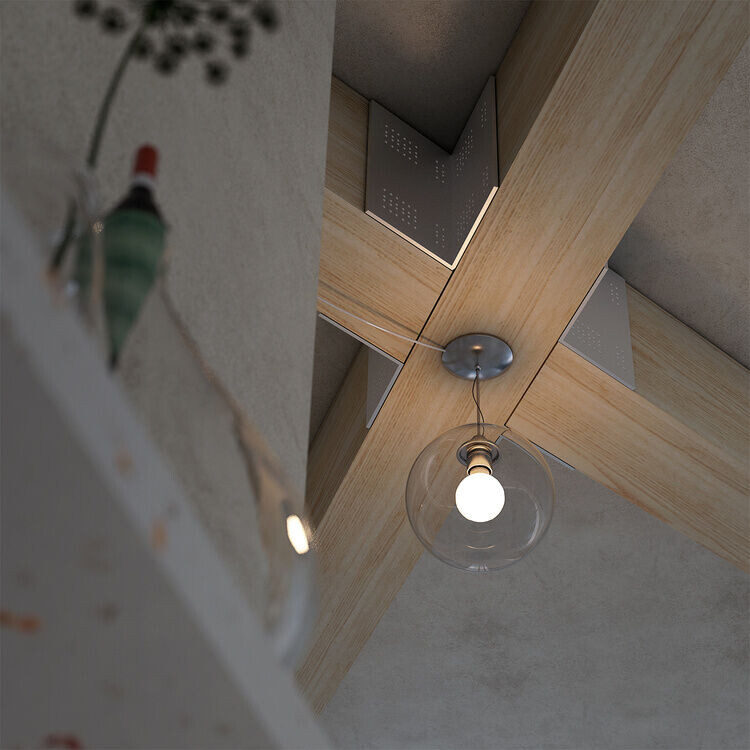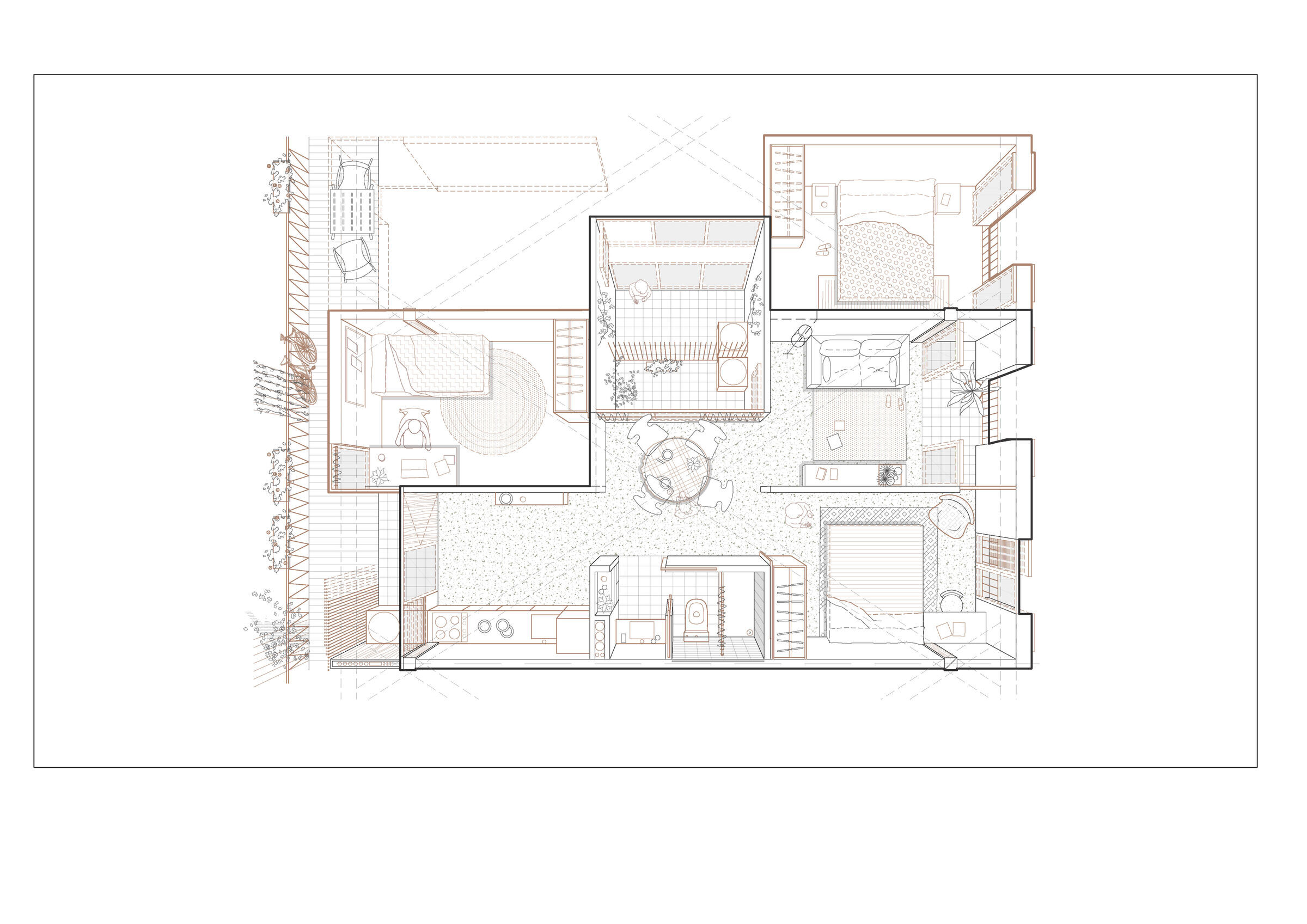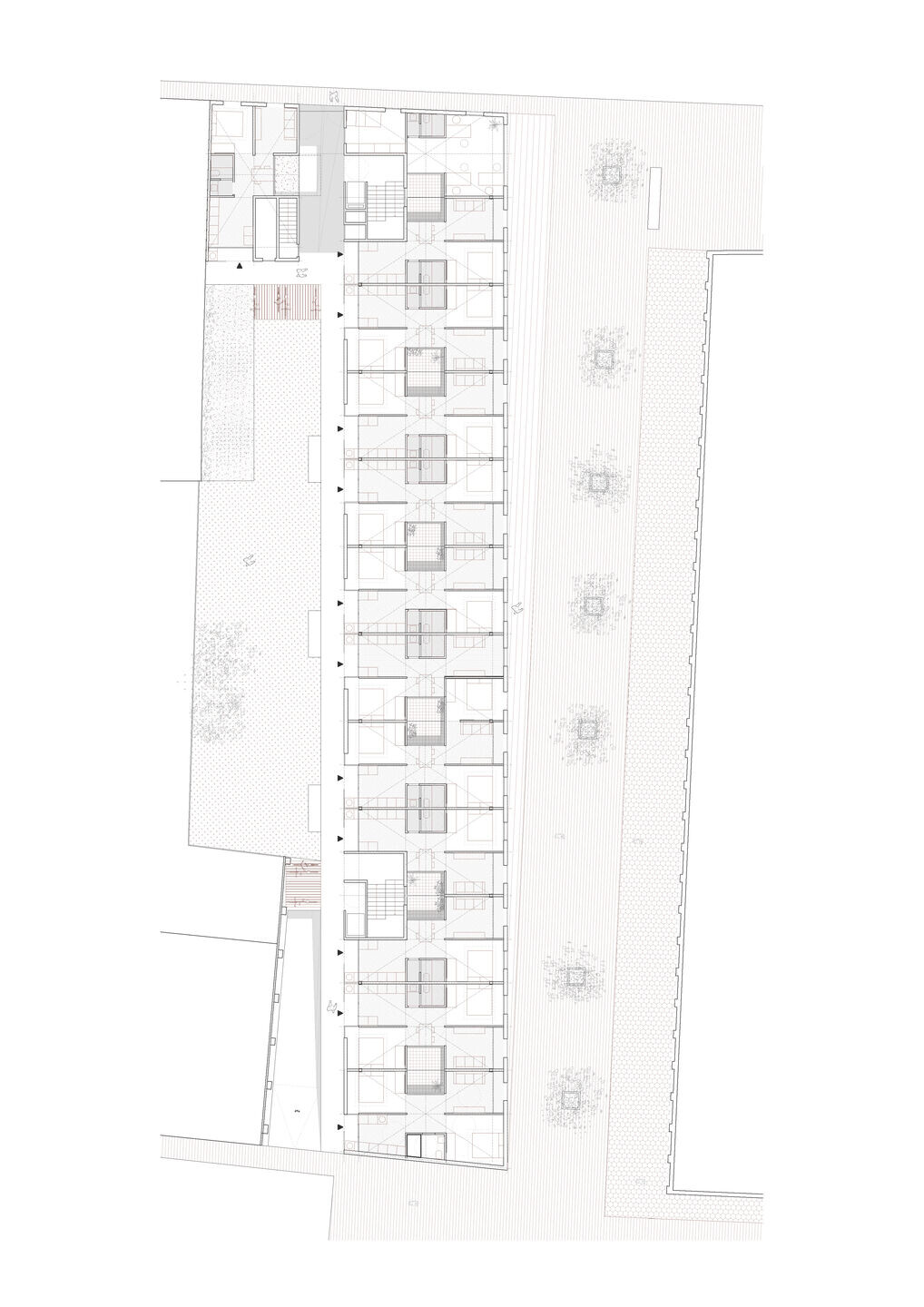Urban quality of the proposal
The proposal is for a building capable of providing an urban response, relating to the public space it delimits, while at the same time leading the user to the most intimate scale of the dwelling. On Fornaris Street, the historical axis of the neighborhood, the main access and the neighborhood's premises are arranged, integrating and making the project visible in the community. The main façade is divided to adapt to the small grain of the neighborhood, while the roof recalls the industrial past, allowing a wide variety of uses. The typology of La Soledat presents very opaque facades facing the street and very permeable courtyards from inside the house. The project enhances this duality, opening from the communal inner courtyard and giving permeability to the passage and Can Ribas.

General strategies
The main pedestrian access, located on Fornaris street, houses the lobby area and service spaces. The road access, together with a secondary pedestrian entrance, is located in the south of the plot, on Ferriol street. This connectivity with the exterior is reinforced by the open first floor dwellings, animating the passage and enhancing the life of the neighborhood. The creation of common and relationship spaces is key to the good integration of the community. The inner courtyard is the central space of the community, while the walkways are understood as an extension of the housing, creating galleries that provide privacy and generate activity.
The project incorporates traditional Mallorcan materials, thus reducing the ecological footprint of the building, promoting traditional trades in danger of disappearing, reducing costs and lead times, and integrating the building into its immediate surroundings.

Development of the functional program
The proposal is based on a mix of typologies on each floor, guaranteeing a mixture of different family models. The building presents three differentiated ranges. On the facades of the inner courtyard and the passage are the main non-hierarchical rooms, all of the same size, so the user is free to decide their use. The central column presents the humid cores and ventilation and lighting courtyards, as well as the central rooms of the dwellings. The roof plays a leading role, incorporating multifunctional terraces, clotheslines, storage spaces and ecological vegetable gardens (as well as photovoltaic panels in the less accessible part).

Flexibility over time
The design of the typology allows the building to be easily modified over time. The number of single, double and triple dwellings can be varied and adapted to new needs.
Sustainability criteria
A construction system is proposed with sustainable and lightweight materials that reduce the building's ecological footprint and waste generation.
Structure: The project proposes a structure of pillars, beams and floor slab made of
CLT. In addition to the fact that this material is renewable, recyclable and reusable, the ecological footprint of a wood structure is between 60% and 75% lower than one made of concrete and steel.
Facade: SATE facade system with wood fiberboard insulation, exterior lime mortar finish and interior leaf of lightweight wood framing system with insulation, thermal transmittance of 0.28 W/m2K. In spaces with improved climatic conditions (climatic patios), a lightweight wood framing system with 10 cm wood fiber splice is used.
Roof: system consisting of a cross-laminated timber board, 15cm thick wood fiber storage, EPDM sheet, geotextile sheet and plantings with cistern, transmittance of 0.21 w/m2K. Light colors on walls to increase the albedo effect.
Climatic courtyard with solar chimney: In order to improve the thermal and lighting comfort of the houses, a series of courtyards with a solar chimney and umbraculum system are arranged. The courtyards are covered with a transparent greenhouse and a dark surface facing south that captures solar radiation and heats the upper air. 200 m2 area for photovoltaic solar collectors, with a peak power of 39.6 kW.
Modular, lightweight, dry construction systems: a modulated interior layout and repeated openings allow for the serial fabrication of the building parts, resulting in an embedded energy in its manufacture of 62,076 MJ/m2, 25% lower than an average building with ceramic sheet and exterior insulation; and 4,936 kg of CO2 eq/m2, with a positive ecological impact.



























